Other than lower commodity prices, there are few other indicators of cooling inflation. That is until yesterday when the inflation outlook got a little brighter. The ISM Prices Paid Index fell sharply from 78.5 to 60.0, the first significant downturn since early 2020. Expectations for ISM prices paid were 73.5. The broad ISM manufacturing index fell slightly to 52.8 from 53 and remains in economic expansion territory. Despite the gain, new orders fell from 49.2 to 48. ISM new orders and prices paid are good predictors of future economic growth and prices, respectively. As we share below from True Insights, ISM tends to correlate well with the new orders index, less the inventories index. Based on the prior 25 years, we should expect the broad ISM index to fall to 40ish. A decline of that magnitude would almost certainly accompany a longer-lasting recession than in 2020 and likely lower prices.


What To Watch Today
Economy
- 10:00 a.m. ET: JOLTS job openings, June (11.000 million expected, 11.254 million prior month)
- Wards Total Vehicle Sales (13.4 million expected, 13 million prior month)
Earnings
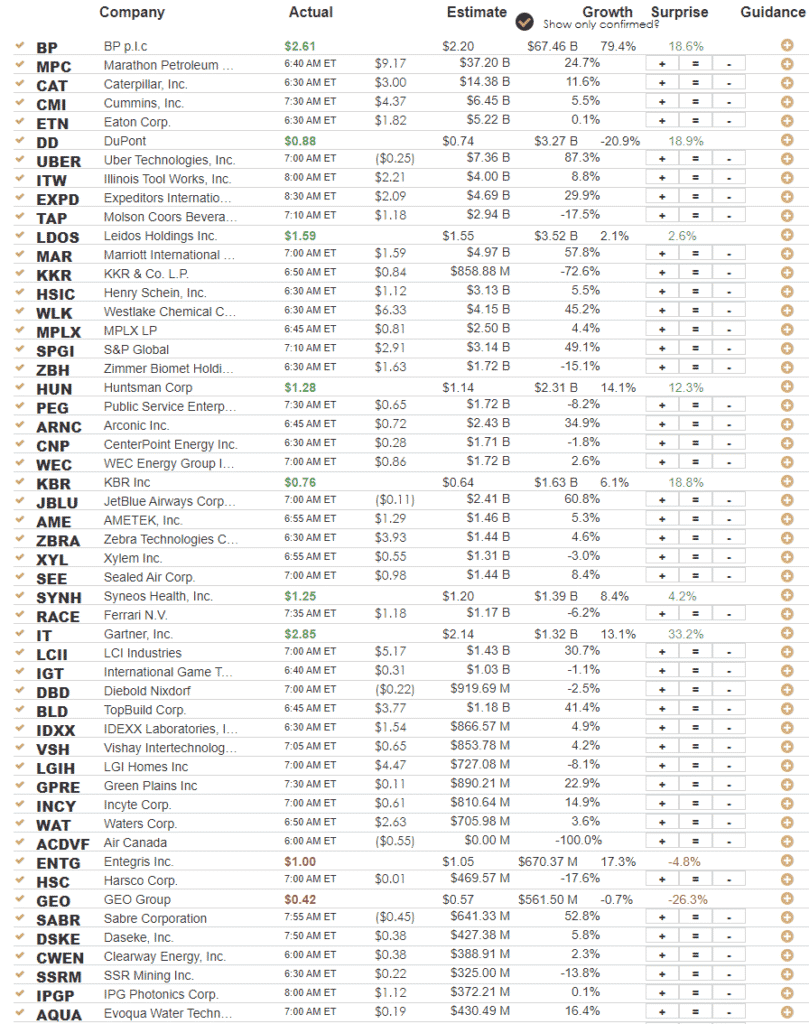
Market Trading Update
Stocks held up on the first day of trading for August, however, this morning futures are pointed lower as economic data continues to weaken. Overbought conditions are now pushing the highest level since the March peak so profit taking is likely. What will be key to this rally is a pullback to the 50-dma that holds and works off the overbought condition. A failure of that level will lead to a retest of recent lows and a likely break to new ones. We took profits in our Amazon (AMZN) trade yesterday, and will likely reduce risk a bit more here depending on today’s action.
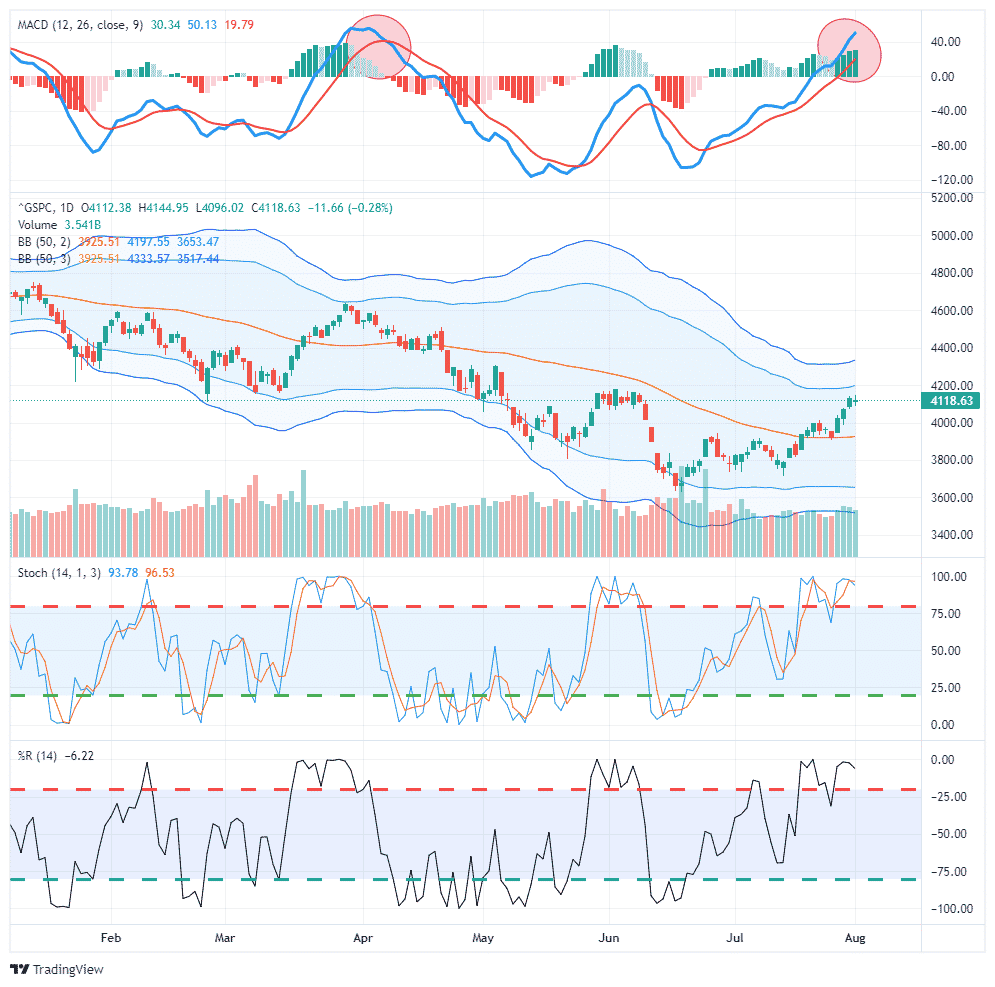
Inventories Are Piling Up
Last Sunday, the New York Times published Retail’s ‘Dark Side’: As Inventory Piles Up, Liquidation Warehouses Are Busy. The article details how Liquidity Services, a company that buys excess inventory and returned items from major retailers, is overwhelmed with goods. Their current condition is not surprising given the numerous warnings from Target and Walmart about excess inventories. Per the article:
The warehouse offers a window into a reckoning across the retail industry and the broader economy: After a two-year binge of consumer spending — fueled by government checks and the ease of e-commerce — a nasty hangover is taking hold.
Brisk sales on the back of fiscal stimulus and supply line problems led retailers to overstock goods. In hindsight, they clearly overestimated the persistence of the demand surge. Once demand lessened, supply lines normalized, and inflation picked up, consumer demand moderated. This perfect storm is weighing on many retailers to the benefit of firms like Liquidity Services, which can buy goods at “only a fraction of the items’ original value” and resell them in most cases for a hefty profit.
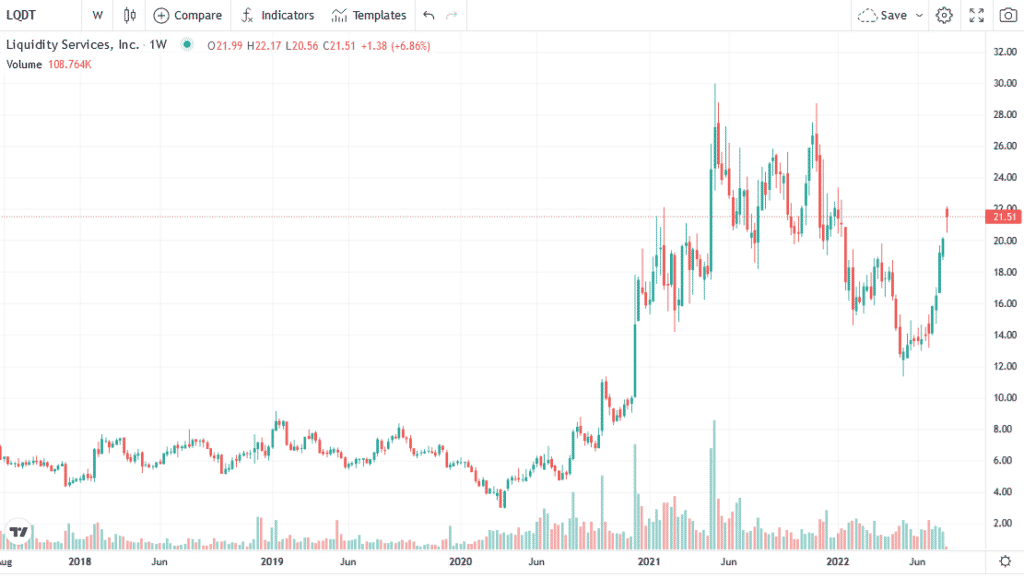
The Communications Sector is a Dog
The first graph below comes from our internal relative analysis report we use to help manage our portfolios. This analysis will soon be available to SimpleVisor subscribers. The graph shows how the recent performance of each sector stacks up to the S&P 500 using 13 technical measures. With a score of nearly -75%, XLC is very oversold. While a strong oversold reading can often be a good buying opportunity, we offer caution.
The second graph shows that XLC has underperformed the S&P 500 for about a year. Over 50% of XLC comprises FaceBook (META) 23% and Google (GOOG) 22%. META is down over 50% this year, and Google is underperforming the S&P 500 by a few percent. Both companies derive well over 90% of revenue from advertising. Advertising is very cyclical and correlates strongly with the economy. Relative performance in the communications sector may stay weak until we see that an economic recovery is taking hold.
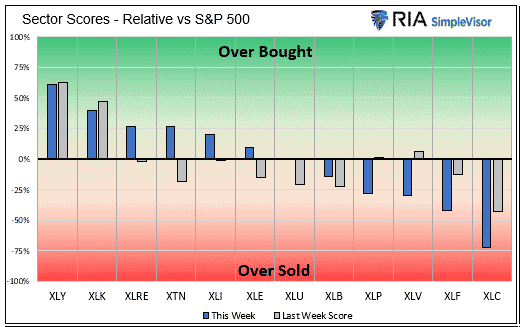

Atlanta Fed GDPNow Predicts Recession Will End in Q3
The Atlanta Fed’s GDPNow first release of its third quarter GDP estimate is 2%. Assuming the number is fairly accurate, a positive real GDP growth number would mean the two-quarter streak of negative GDP growth will end this quarter. Therefore, the recession will technically be over. The problem with the Atlanta Fed’s forecast is they only use current data and no forecasts. The Fed’s data is limited as most July data will just start coming out this week. As we share below, the initial forecast for the second quarter was 1.9%, and the BEA just announced real GDP shrank by .9% in that quarter. Therefore, take the current estimate with a grain of salt. In a month, with more data available, we will have better visibility into recent economic trends.
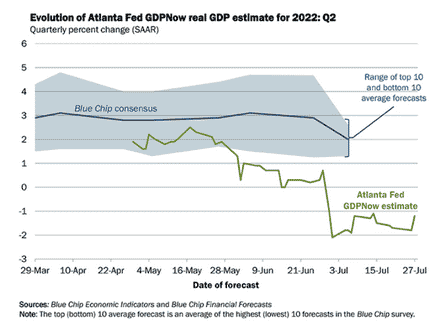
Please subscribe to the daily commentary to receive these updates every morning before the opening bell.
If you found this blog useful, please send it to someone else, share it on social media, or contact us to set up a meeting.


